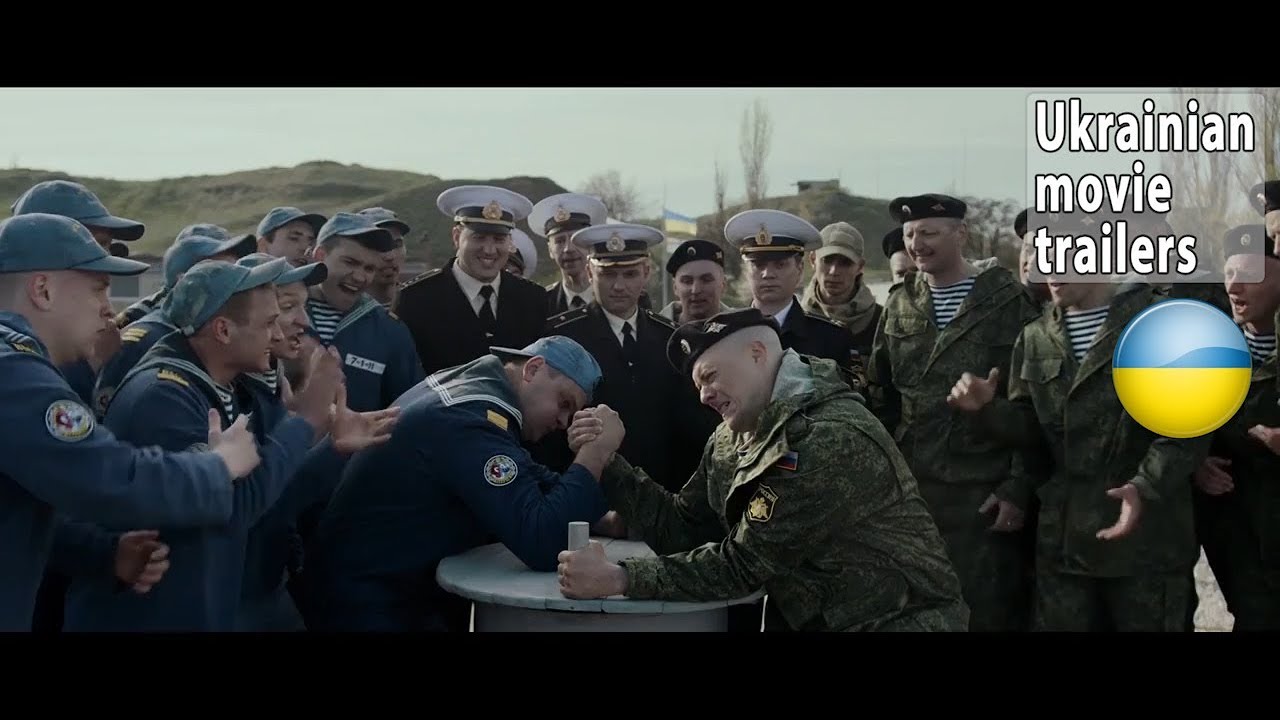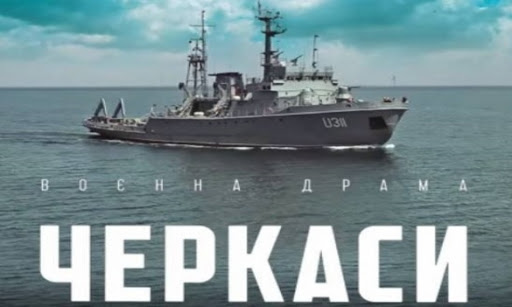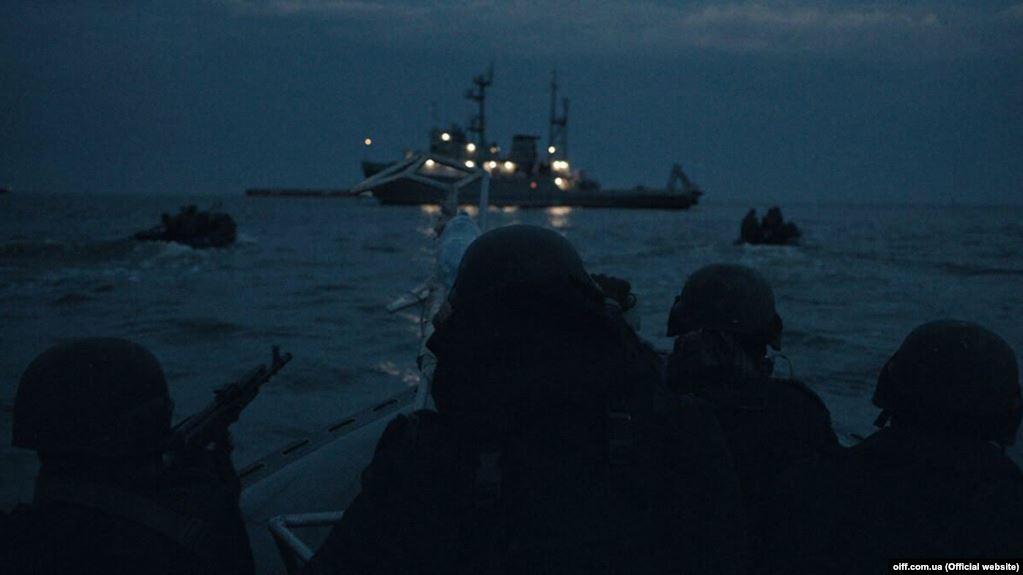During the last six years, Ukraine’s cinematography has finally started to develop. While one of the reasons for this has been the support it has received from the state, others include a demand from Ukrainian citizens to watch films about themselves and their country, along with international interest in the events in Ukraine. The Revolution of Dignity and Russian aggression which followed are reflected in the works of both documentary and fiction film directors.
Read also: Pushing Hollywood aside – renaissance in Ukrainian cinema
The drama Cherkasy, by film director Tymur Yashchenko, is not about heroization and pathos: rather, it shows ordinary people confronted with ordinary human choices in extraordinary circumstances. On a larger scale, these choices mirror the big picture: the occupation of the Crimean peninsula.
The Crimean Tatar factor
Russian propaganda likes to repeat the message that Crimea was taken without a single drop of blood. In fact, this is not true: Crimean Tatar Reshat Ametov became one of the first victims of the occupation. After Russian special forces officers seized the building housing the Crimean Council of Ministers, Ametov came to protest the occupation. A few days later, he was found dead, bearing signs of torture. Thanks to there being a video of his kidnapping. his case became public, while others who went missing have never been found.
Read also: Crushing dissent. Timeline of repression against Crimean Tatars in occupied Crimea
The Crimean Tatar aspect is reflected in the drama Cherkasy. While working on the script, the director repeatedly heard from sailors who had served on the Cherkasy about the crucial support provided by Crimean Tatars to the minesweeper and its crew.
Crimean Tatars were among those who protested most strongly against the occupation, and until now they remain one of the main targets for Russian repression on the peninsula.
However, from a military point of view, the context and the situation before the occupation raises questions whether the events in 2014 could have gone in another direction.
The history of the Russian navy presence in Crimea

Among the first scenes in the film, there is a friendly competition between Ukrainian and Russian sailors based in Crimea. In it, Ukrainians lose while Russians demonstrate their attitude of “older brother” superiority towards Ukrainians.
The Russian navy was present in Ukraine long before the occupation.
The history of the Black Sea Fleet goes back to 1783 when its construction started after the suppression of the Crimean Tatar uprising and the peninsula’s occupation by the Russian Empire.
In 1918, after one and a half centuries under Russian Empire occupation, the ships of the Black Sea Fleet came under the jurisdiction of the Ukrainian People’s Republic. However, this period ended after around one year when the Russian Volunteer Army and Entente seized southern Ukraine.
In 1928, with Ukraine under Soviet rule, the fleet, devastated by World War I and the Bolshevik revolution, saw reconstruction commence. The input of Ukrainians in it was significant. The development went on during War War II, with hundreds of thousands of Ukrainians
fighting in the USSR fleets.
Ukraine’s state interests and the fleet issue after the Soviet Union collapse
After the collapse of the Soviet Union, the Black Sea fleet came under Ukraine’s control in line with the principles of territorial integrity. It was not long before these good days for Ukraine came to an end, and the “Crimean problem” was back on the agenda. Experts were busy analyzing the reasons and the consequences of it long before the 2014 occupation.
“The problem of the Black Sea Fleet for Ukraine was created by its first president Leonid Kravchuk personally,” Serhiy Hrabovskyi, political expert, voiced
this thought in 2005 referring to Viacheslav Chornovil, Ukrainian politician, Soviet dissident, and activist of the movement against Russian discrimination policy towards the Ukrainian people.
Citing the statistics and polls of that time, Hrabovsky continued that 78% of Black Sea Fleet servicemen and staff voted for Ukraine’s independence in 1991. Also, more than 60% of its officers were ready to take the oath of allegiance to the people of Ukraine. However, Kravchuk chose the direction of dividing the fleet with Russia. As a result, Ukraine’s first Minister of Defence Kostiantyn Morozov resigned, saying that he did not want to participate in the government’s betrayal. In Morozov’s opinion, the fleet itself was not the most important aspect, but Russia’s powerful presence in Sevastopol and Crimea.
Negotiations with Russia on the issues surrounding the fleet commenced in 1992. At that time, Yuriy Kostenko was a member of Ukraine’s delegation as a representative of the democratic opposition.
“From the very beginning I noticed that the behavior of Russia’s delegation did not correspond to the status of international relationships. There was neither equality of the sides, nor political compromises - only Russia’s interest dominated,” Kostenko described.
The ex-MP remembers that at first the Ukrainian delegation tried to fight Russia’s dictatorship, however, time was playing against it due to Ukraine’s total energy dependence, economic crisis, lack of market reforms, and the population’s extreme poverty. These factors made the Ukrainian government more and more compliant.
It resulted in signing the so-called “big package” of agreements together with the main Russian–Ukrainian Friendship Treaty in 1997. Kostenko did not take part in it.
“It was a total defeat. Russia received not only its part of the fleet but also more than 80% of Ukraine’s part of the Black Sea Fleet. Without any compensation,” the ex-MP described.
As recounted by Kostenko, the worst thing was that Ukraine transferred its territory to Russia for the Russian Black Sea Fleet in Ukraine. In particular, the city of Sevastopol with all the infrastructure, a big amount of the objects of the ex-USSR fleet, located across the whole territory of Crimea, and even a military sanatorium in Yalta.
“The concluded agreements consolidated the presence of foreign military units on the territory of Ukraine. This foreign country had territorial claims to Ukraine, constantly violated the conditions of stay in terms of replacement of weapons and equipment, and exceeded the established restrictions,” Ukrainian Military Pages state.
There may be no other example of foreign military forces having at their disposal such a range of facilities; these including theaters, museums, schools, communication systems, radio engineering service, rocket-artillery and mine-torpedo weapon facilities, to name but a few.
At the 1997 negotiations, Ukraine’s debt to Russia amounted to $3 bn was registered. Out of it $500m was subtracted for the cost of the fleet which Ukraine gave to Russia and $200m which were compensated because Ukraine gave its tactical nuclear weapons to Russia. The remaining $2.3bn was divided into equal parts amounting to $97m per year which were written off from Ukraine’s budget.
Kostenko summarized that with the agreements of 1997, Russia paved its wave to the illegal annexation of Crimea in 2014.
The Agreement on the Status and Conditions for Russia’s Black Sea Fleet in Ukraine as of 1997 foresaw the fleet remaining in Sevastopol until 2017. However, in 2010 the then president Viktor Yanukovych
and Russian president Dmitry Medvedev signed an agreement on prolonging the stay by 25 years until 2042. Despite the discontent of Ukrainian society with it, the Ukrainian Parliament ratified the agreement due to the support of the coalition consisting of Yanukovych Party of Regions, the Communist Party, and the Lytvin Bloc.
Cherkasy: the film vs reality

The film Cherkasy sticks to the chain of events at the beginning of 2014. However, it starts a little earlier, before the Revolution of Dignity, with young men joining the fleet.
Apart from the background of the relationships with Russian soldiers, the atmosphere of the time is shown through old Soviet traditions in the military. In particular, “hazing”, the process of brutalizing younger recruits at the hands of older servicemen and officers known in the ex-Soviet Union countries as the “law of the grandfather”.
These traditions integrated into everyday routine led to a lack of understanding among the sailors of why the fleet was needed in general.
When the moment of truth arrived, all of it played its role. The film Cherkasy contains a scene with the officers of the ship announcing to the soldiers that the minesweeper is going to defend until the end, suggesting those who disagree should leave it immediately. Some sailors from the real Cherkasy played episodic roles in the film. One of them, Mykhailo Voskoboynyk, played an ordinary sailor. He says that in reality this episode was also a terrible blow.
Previously to it, the film also showed talks between the officers. Some did not consider remaining under Ukraine’s flag because of their connection to the Russian navy members - some were godfathers, some had other relatives among them. In general, the two fleets had coexisted together for so long that for those serving there it was hard to imagine that one of them would have to fight the other.
Cherkasy was among nine Ukrainian ships that were blocked by the Russian occupational forces in the Donuzlav Bay. The way to the sea was closed by ships that Russia had sunk. Cherkasy was the last ship under Ukraine’s flag there.
The film was produced in close cooperation and with the assistance of the Navy and the General Staff of the Armed Forces of Ukraine. Law enforcement agencies provided real ships of the fleet and special military equipment.

Yuriy Fedash, the real commander of the real Cherkasy, was the main consultant for the film.
“I don’t really think that me and my crew are heroes. We just tried to do the thing which every member of the military has to do. We tried to escape the situation, remaining human, military men, to fulfill our duty, not violating our oath as much as possible,” Fedash said.
The only thing Fedash regrets is that he did not give the order to sink the Cherkasy. At that time he hoped that the Russians would return the seized ships to Ukraine.
The film also touches on the topic of the lack of orders from the Ukrainian General Staff which caused confusion for those in Crimea.
The Russians seized Cherkasy after the assault. In the film, one of the sailors died. In reality, no one was killed there.
Yashchenko stresses that his film is not a documentary, but a collective image of the Ukrainian navy during the Crimea occupation.
In one of the scenes, the soldiers sing the hit of that time, Warriors of Light, affirming their desire to stand until the end and keep up their morale. Such an event did indeed take place, and the video recording of it went viral. However, it occurred on another ship, Kostiantyn Olshansky, which was seized earlier.
The Cherkasy commander explained that even the YouTube link has a mistake in the name ascribing the incident to the Cherkasy personnel. In fact, his sailors had no time for it.
In light of the terrible losses which Ukraine experienced in the spring of 2014, the actions of military men such as those from the Cherkasy minesweeper serve as a ray of light offering hope and inspiration.
Read also:
- Portnikov: Crimea’s past and Kremlin’s falsifications
- Could Ukraine have fought off Crimean occupation? A crucial document you should know
- Black Sea gas deposits – an overlooked reason for Russia’s occupation of Crimea
- Is Russia getting ready to launch a nuclear strike from Crimea?
- Story of the “cyborgs”: Ukraine’s Donetsk airport defenders to hit big screen
- The Bolbochan raid: How Ukrainian troops captured Crimea 100 years ago
- From stage to the front line: Ukrainian filmmakers honor the memory of Vasyl Slipak
- Russia returns Ukrainian naval ships it highjacked a year ago
- Cyborgs on Film: New Documentary Chronicles Donetsk Airport Battle
- Cadets and instructors from the Nakhimov Naval Academy in Sevastopol transfer to Odesa (2014)
- “Crimea Unveiled”: Documentary film spotlights Crimean Tatars and Ukraine
- Russian invaders captured the landing ship Olshanskiy (2014)

